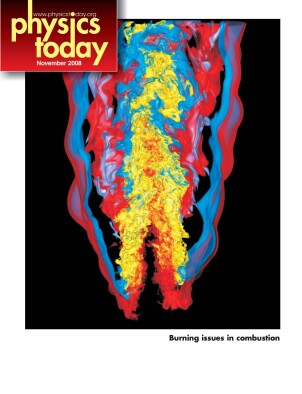Simulating whistler turbulence
DOI: 10.1063/1.3027979
In plasma physics as in fluid dynamics, turbulence remains one of the most challenging fundamental problems to understand. The nonlinear processes that lead to characteristic turbulence power spectra observed in the solar wind—the plasma that flows from the Sun out through the solar system—are poorly understood. So too are the dissipation mechanisms by which plasma turbulence transfers its energy to plasma electrons and ions. Most research in plasma turbulence has assumed that dissipation is weak and the plasma may be approximated as a fluid. But interest has increased in the so-called short-wavelength regime, in which dissipation plays out. Recently, an international team performed the first kinetic, particle-in-cell simulations of decaying short-wave-length whistler-mode turbulence in a collisionless plasma, using parameters similar to those of the solar wind near Earth. (Whistlers acquired their name from World War I radio operators who frequently heard what they thought were outgoing artillery shells, brief whistling sounds that decreased in frequency.) Limited not by any approximations but only by computing resources, the researchers found steep power-law magnetic fluctuation spectra consistent with those observed in space. In addition, they found and analyzed anisotropies in the turbulence whereby stronger initial fluctuations generated more magnetic energy perpendicular to the background magnetic field than along it. Because of the anisotropies, the whistlers were found to be more compressible than expected. The physicists also demonstrated the first simulation results of whistler turbulence dissipation by showing signatures of two well-known types of wave–particle interactions. (




